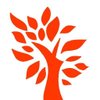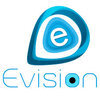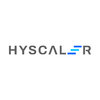Filter interviews by
Indian Peroxide Safety Engineer Interview Questions, Process, and Tips
Indian Peroxide Safety Engineer Interview Experiences
1 interview found
I appeared for an interview before Sep 2020.
Interview Questionnaire
16 Questions
- Q1. What about him self?
- Q2. Please share your previous company experience and what's role & responsibility in previous company?
- Q3. What achieved major in previous company ?
- Q4. Why is choose safety field?
- Ans.
I chose the safety field because I believe that everyone deserves to work in a safe environment.
Passion for ensuring the well-being of others
Desire to prevent accidents and injuries
Interest in implementing safety protocols and procedures
Belief that safety is a fundamental human right
Examples: implementing safety measures in construction sites, ensuring compliance with safety regulations in factories, conducting safety
- Q5. What is hazards?
- Ans.
Hazards are potential sources of harm or danger that can cause injury, illness, or damage to property.
Hazards can be physical, chemical, biological, or ergonomic in nature.
Examples of physical hazards include slippery floors, falling objects, and loud noises.
Chemical hazards can include exposure to toxic substances or flammable materials.
Biological hazards can involve exposure to infectious agents or allergens.
Ergonomi...
- Q6. What is unsafe conditions & act?
- Ans.
Unsafe conditions & acts are situations or behaviors that can lead to accidents or injuries in the workplace.
Unsafe conditions include things like faulty equipment, poor lighting, and cluttered workspaces.
Unsafe acts include things like not wearing proper protective gear, using equipment improperly, and horseplay.
Identifying and addressing unsafe conditions and acts is crucial for maintaining a safe work environment.
Re...
- Q7. What is MSDS ?
- Ans.
MSDS stands for Material Safety Data Sheet.
MSDS provides information about the hazards, handling, storage, and emergency procedures for a particular substance or product.
It is a document required by law for all hazardous chemicals.
MSDS includes information on the chemical composition, physical and chemical properties, and health effects of the substance.
It also provides information on first aid measures, firefighting m...
- Q8. What is HIRA?
- Ans.
HIRA stands for Hazard Identification and Risk Assessment.
HIRA is a systematic process of identifying potential hazards and analyzing the associated risks.
It involves identifying the likelihood and consequences of a hazard occurring and determining appropriate control measures.
HIRA is commonly used in industries such as construction, manufacturing, and oil and gas.
Examples of hazards that may be identified through HIRA...
- Q9. How many types of hazards?
- Ans.
There are three types of hazards: physical, chemical, and biological.
Physical hazards include slips, falls, and machinery accidents.
Chemical hazards include exposure to toxic substances and flammable materials.
Biological hazards include exposure to viruses, bacteria, and other microorganisms.
Hazards can also be classified as acute or chronic, depending on the duration and severity of exposure.
Examples of acute hazards ...
- Q10. What is NFPA?
- Ans.
NFPA stands for National Fire Protection Association.
NFPA is a non-profit organization that develops and publishes codes and standards related to fire safety and prevention.
Their codes and standards are widely used by fire departments, insurance companies, and other organizations to ensure safety.
Examples of NFPA codes include NFPA 70 (National Electrical Code), NFPA 101 (Life Safety Code), and NFPA 13 (Standard for th
- Q11. What is JSA ? What difference JSA & Risk assessment?
- Ans.
JSA stands for Job Safety Analysis. It is a process of identifying potential hazards and risks associated with a specific job or task.
JSA involves breaking down a job into individual steps and analyzing each step for potential hazards and risks.
The goal of JSA is to identify and eliminate or mitigate potential hazards before they cause harm.
JSA is typically used in industries such as construction, manufacturing, and he...
- Q12. What is HAZOP?
- Ans.
HAZOP stands for Hazard and Operability Study, a structured and systematic approach to identify potential hazards and operability issues.
HAZOP is a team-based approach to identify and evaluate potential hazards and operability issues in a process or system
It involves breaking down the process or system into smaller parts and analyzing each part for potential deviations from the intended design
The team uses a set of gui...
- Q13. What is fire? Classification of fire
- Ans.
Fire is a chemical reaction that releases heat, light, and various gases. It can be classified into different types based on the fuel involved.
Fire is a rapid oxidation process that occurs when fuel, heat, and oxygen are present.
It releases energy in the form of heat and light.
Fire can be classified into five main types: Class A, Class B, Class C, Class D, and Class K.
Class A fires involve ordinary combustible material...
- Q14. What is Fire point& flash point?
- Ans.
Fire point is the temperature at which a fuel ignites and continues to burn, while flash point is the temperature at which a fuel ignites momentarily.
Fire point is higher than flash point.
Flash point is used to classify flammable liquids.
Examples of flash point: gasoline (−43 °C), diesel fuel (52 °C), kerosene (38 °C).
Examples of fire point: gasoline (246 °C), diesel fuel (74 °C), kerosene (74 °C).
- Q15. Chemical handling
- Q16. Induction , training, job specific training,
Interview Preparation Tips
Top trending discussions






Interview questions from similar companies

I applied via Referral and was interviewed in Nov 2020. There were 4 interview rounds.
Interview Questionnaire
1 Question
- Q1. MPLS, OSPF, BGP, ISIS
Interview Preparation Tips

I applied via Naukri.com and was interviewed in Sep 2020. There were 4 interview rounds.
Interview Questionnaire
2 Questions
- Q1. How to integrate the sites or the integration steps?
- Ans.
Integration of sites involves identifying the systems to be integrated, defining the data flow, and implementing the integration process.
Identify the systems to be integrated
Define the data flow between the systems
Choose the appropriate integration method (API, ETL, etc.)
Develop and test the integration process
Deploy the integration process and monitor for errors
Ensure data security and compliance
Provide ongoing suppor
- Q2. What vlan?
- Ans.
VLAN stands for Virtual Local Area Network and is used to logically separate a network into smaller segments.
VLANs are used to improve network performance and security.
They allow for better network management and easier troubleshooting.
VLANs can be configured on switches and routers.
Examples of VLANs include separating guest and employee networks or separating different departments within a company.
Interview Preparation Tips
Skills evaluated in this interview

I applied via Referral and was interviewed before Feb 2022. There were 4 interview rounds.

Discussion about Basic Information
(1 Question)
- Q1. I was applying for CAD engineer so asking about CAD commands and telecommunications. Prepare with your skills.
(1 Question)
- Q1. Discussion about Work experience, CTC, work Location.
Interview Preparation Tips

I applied via Company Website and was interviewed in Jan 2022. There were 3 interview rounds.

(2 Questions)
- Q1. What is mean by testing
- Ans.
Testing is the process of evaluating a system or component to determine if it satisfies specified requirements.
Testing is done to identify defects or errors in software or hardware.
It involves executing a system or component with the intent of finding bugs or verifying its functionality.
Testing can be performed at various levels such as unit testing, integration testing, system testing, and acceptance testing.
Different...
- Q2. Why we are doing testing
- Ans.
Testing is done to ensure that the software meets the requirements and is of high quality.
To identify defects and errors in the software
To ensure that the software meets the specified requirements
To improve the quality of the software
To increase customer satisfaction
To reduce the risk of software failure
To ensure that the software is reliable and secure
(5 Questions)
- Q1. What are your salary expectations?
- Q2. What is your family background?
- Q3. Share details of your previous job.
- Q4. What are your strengths and weaknesses?
- Q5. Tell me about yourself.
Interview Preparation Tips
Skills evaluated in this interview

(1 Question)
- Q1. What you did to learn new technology?
- Ans.
I keep myself updated by attending conferences, reading blogs, and taking online courses.
Attend conferences and workshops to learn from experts
Read blogs and articles to stay updated on latest trends
Take online courses and tutorials to gain practical knowledge
Experiment with new technology by building projects
Collaborate with peers to learn from their experiences
Interview Preparation Tips

Interview Questionnaire
1 Question
- Q1. Mostly they checking your presence in interview and asking about your experience for particular field and background.

Interview Questionnaire
1 Question
- Q1. Relates to project & last company experience

I applied via Naukri.com and was interviewed in Jun 2020. There were 3 interview rounds.
Interview Questionnaire
1 Question
- Q1. All the questions were relevant to my domain knowledge.
Interview Preparation Tips
The rest is in the hands of the interviewer.

Interview Questionnaire
1 Question
- Q1. SDLC Model
Interview Preparation Tips
Indian Peroxide Interview FAQs
Tell us how to improve this page.
Indian Peroxide Interviews By Designations
Interview Questions for Popular Designations
- Safety Manager Interview Questions
- Senior Safety Officer Interview Questions
- Senior Safety Engineer Interview Questions
- Safety Officer Interview Questions
- Fire & Safety Officer Interview Questions
- Safety Supervisor Interview Questions
- Fire & Safety Supervisor Interview Questions
- Senior Safety Supervisor Interview Questions
- Show more
Interview Questions from Similar Companies
|
Junior Engineer
18
salaries
| ₹2.5 L/yr - ₹3.9 L/yr |
|
DCS Engineer
15
salaries
| ₹2.5 L/yr - ₹4.2 L/yr |
|
Engineer 1
11
salaries
| ₹2.5 L/yr - ₹3.8 L/yr |
|
Production Engineer
10
salaries
| ₹2.8 L/yr - ₹4 L/yr |
|
Safety Engineer
8
salaries
| ₹3.2 L/yr - ₹4 L/yr |

Marpu Foundation

Huawei Technologies

HCL Infosystems

Z X Learning
- Home >
- Interviews >
- Indian Peroxide Interview Questions >
- Indian Peroxide Safety Engineer Interview Questions












